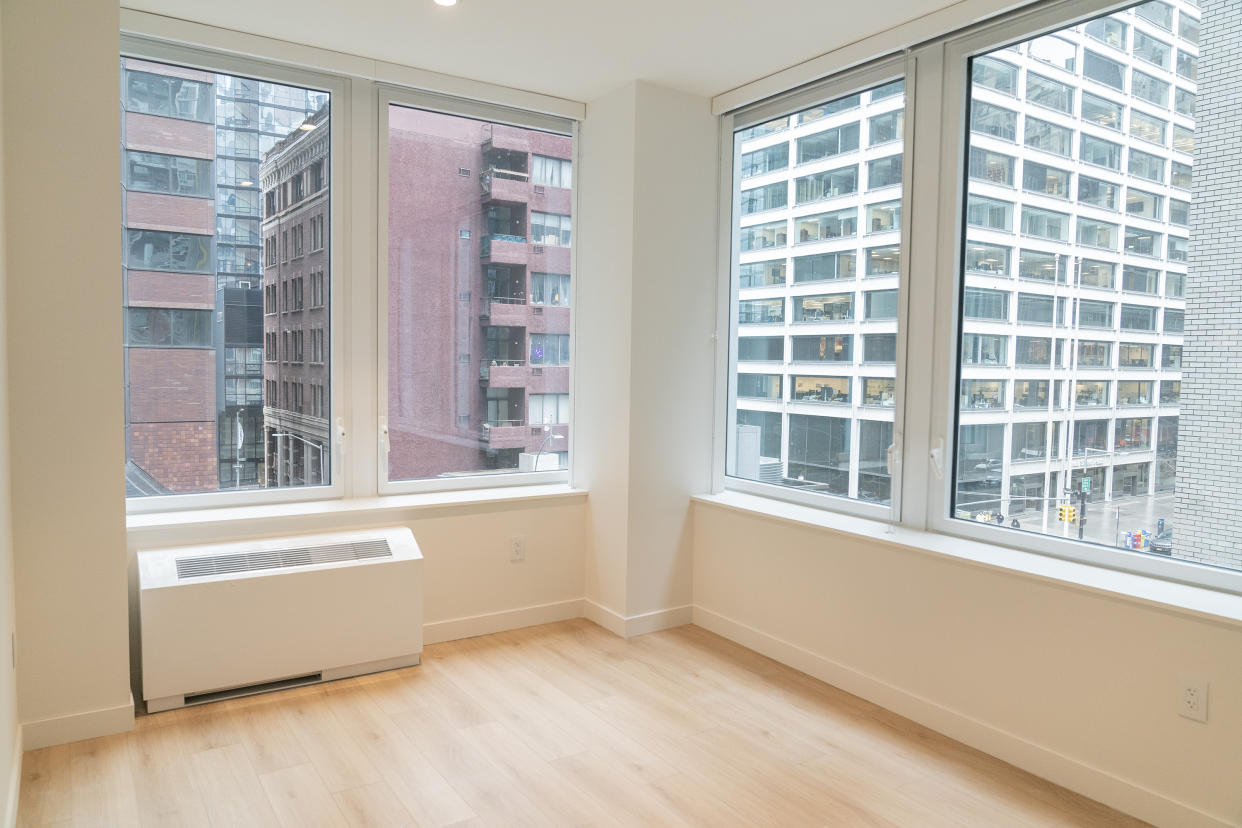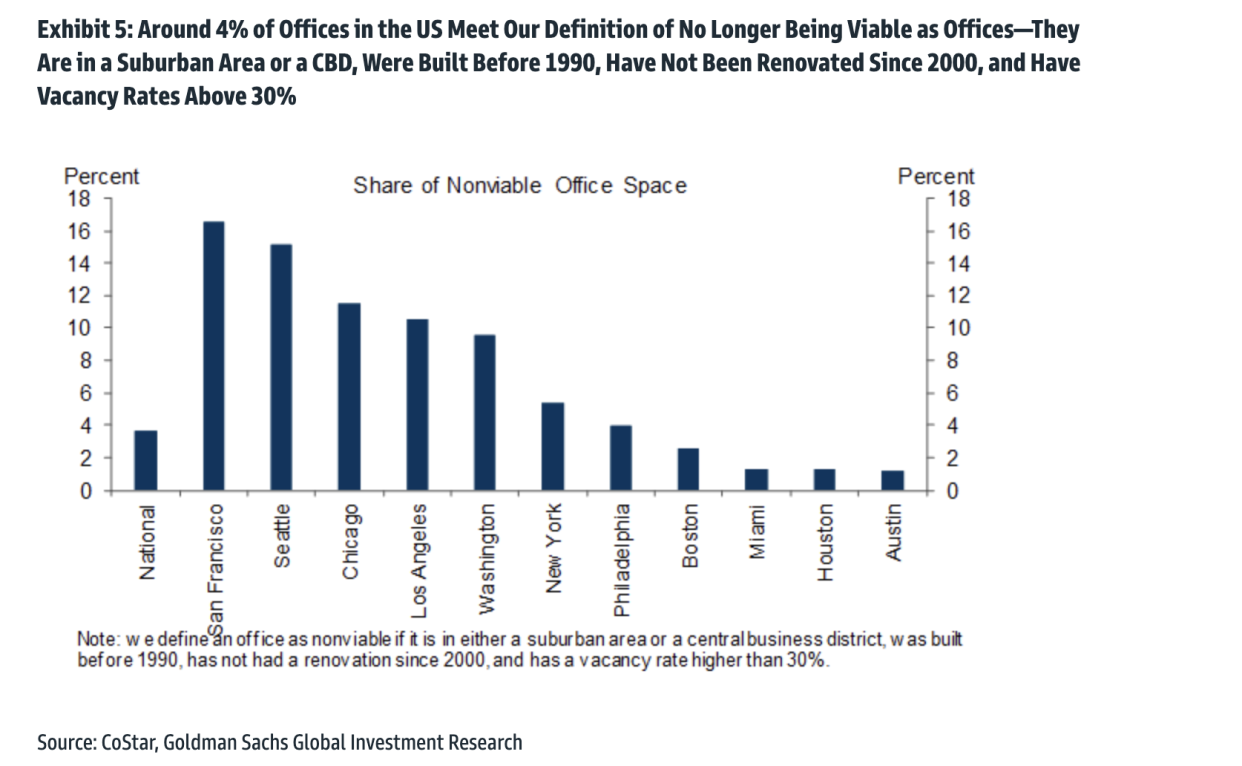America has too many office buildings and not enough living space — why that won't change anytime soon
The changing nature of how we work is driving up office vacancy rates, and at the same time, there is a shortage of residential housing.
Converting office buildings to multifamily dwellings is one potential solution to the imbalance — but right now, the price is too high for the option to be appealing to developers, according to a note by Goldman Sachs' economics team released earlier this week.
Office vacancies increased to 13.5%, the highest level since 2000, according to Goldman. And over the next decade, economists at the firm expect the office vacancy rate to climb to 18%.

Goldman Sachs estimates that overall about 4% of US office buildings may no longer be viable. These structures were most likely built 30 or more years ago, have not been renovated since 2000, and are currently facing vacancy rates above 30%.
However, just 0.4% of office space was converted into multifamily units before the pandemic. That has only ticked up slightly to 0.5% last year despite major shifts in office use.
“The office-to-multifamily conversion rate is quite low, suggesting that there may be substantial financial and physical hurdles to conversion,” Goldman Sachs economists Jan Hatzius and Alec Phillips wrote in a note.
Office prices haven’t fallen enough to spur up developers to do these conversion projects.
Goldman Sachs found, “For the top 5 metropolitan areas that are most affected by remote work, we estimate that office acquisition prices would need to fall almost 50% for conversion to be financially feasible. This suggests that most of these offices will likely remain underutilized in the near term.”

Another part of the equation is safety codes. Residential buildings require bedrooms to have certain sizes of windows, but it is impossible to restructure some office buildings in a way that satisfies those demands, Goldman Sachs economists explained. And transforming an office’s existing plumbing, ventilation, and electric system for each residential unit can also be a challenge.
"Because the conversion process is slow and costly, available office space is likely to remain excessive and many buildings are likely to remain underutilized," the economists wrote, noting that "as a result, we expect new office investment to remain sluggish in the next few years."
Dani Romero is a reporter for Yahoo Finance. Follow her on Twitter @daniromerotv.
